
How to Use Adafruit Bluefruit LE Shield: Examples, Pinouts, and Specs
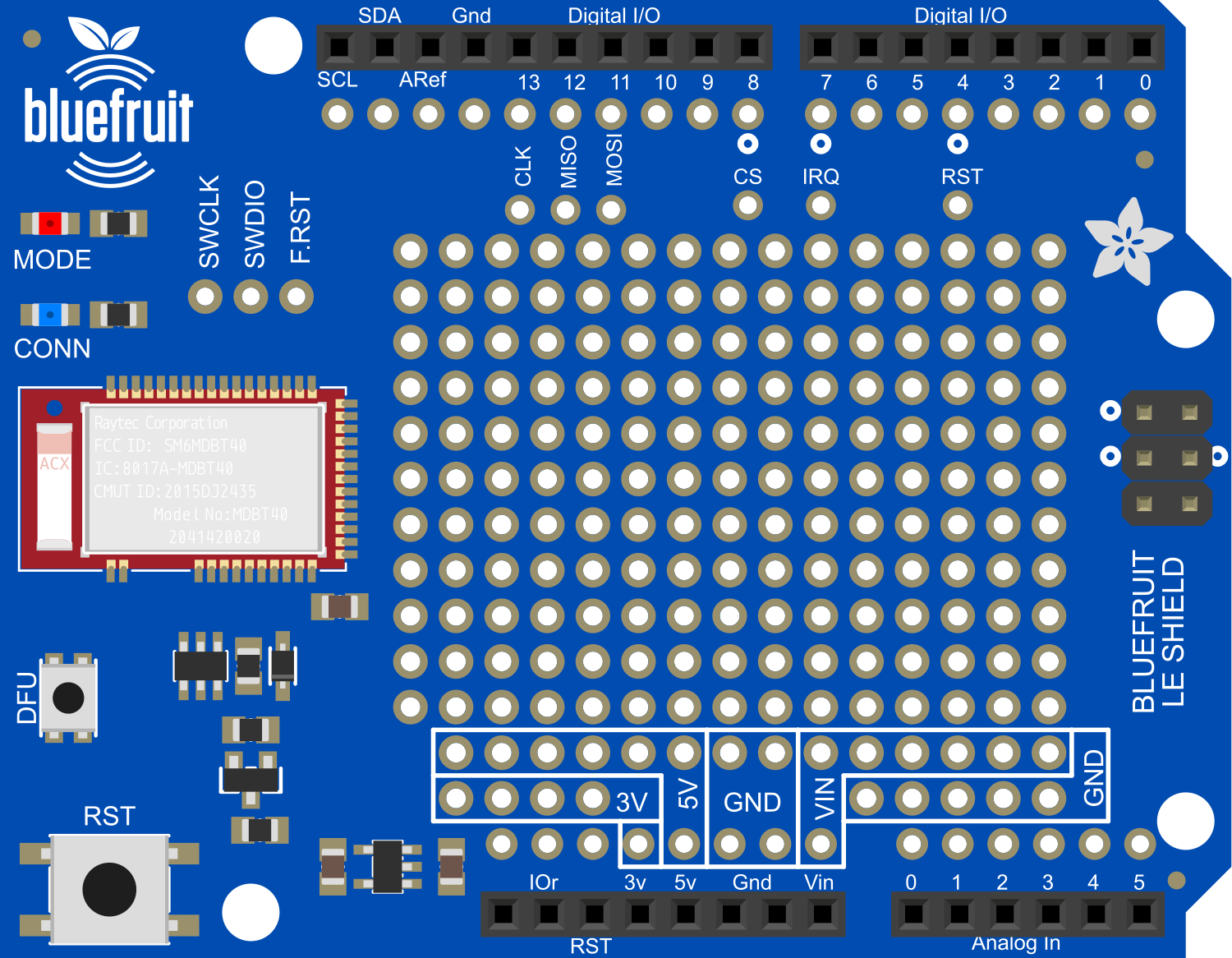
 Design with Adafruit Bluefruit LE Shield in Cirkit Designer
Design with Adafruit Bluefruit LE Shield in Cirkit DesignerIntroduction
The Adafruit Bluefruit LE Shield is a versatile Bluetooth Low Energy (BLE) module designed for seamless integration with Arduino boards. This shield enables wireless communication between an Arduino and Bluetooth-enabled devices such as smartphones, tablets, and computers. It is ideal for a variety of applications, including wireless data transfer, remote control projects, and IoT (Internet of Things) implementations. The shield operates as either a BLE server (peripheral) or client (central), providing flexibility in designing BLE applications.
Explore Projects Built with Adafruit Bluefruit LE Shield
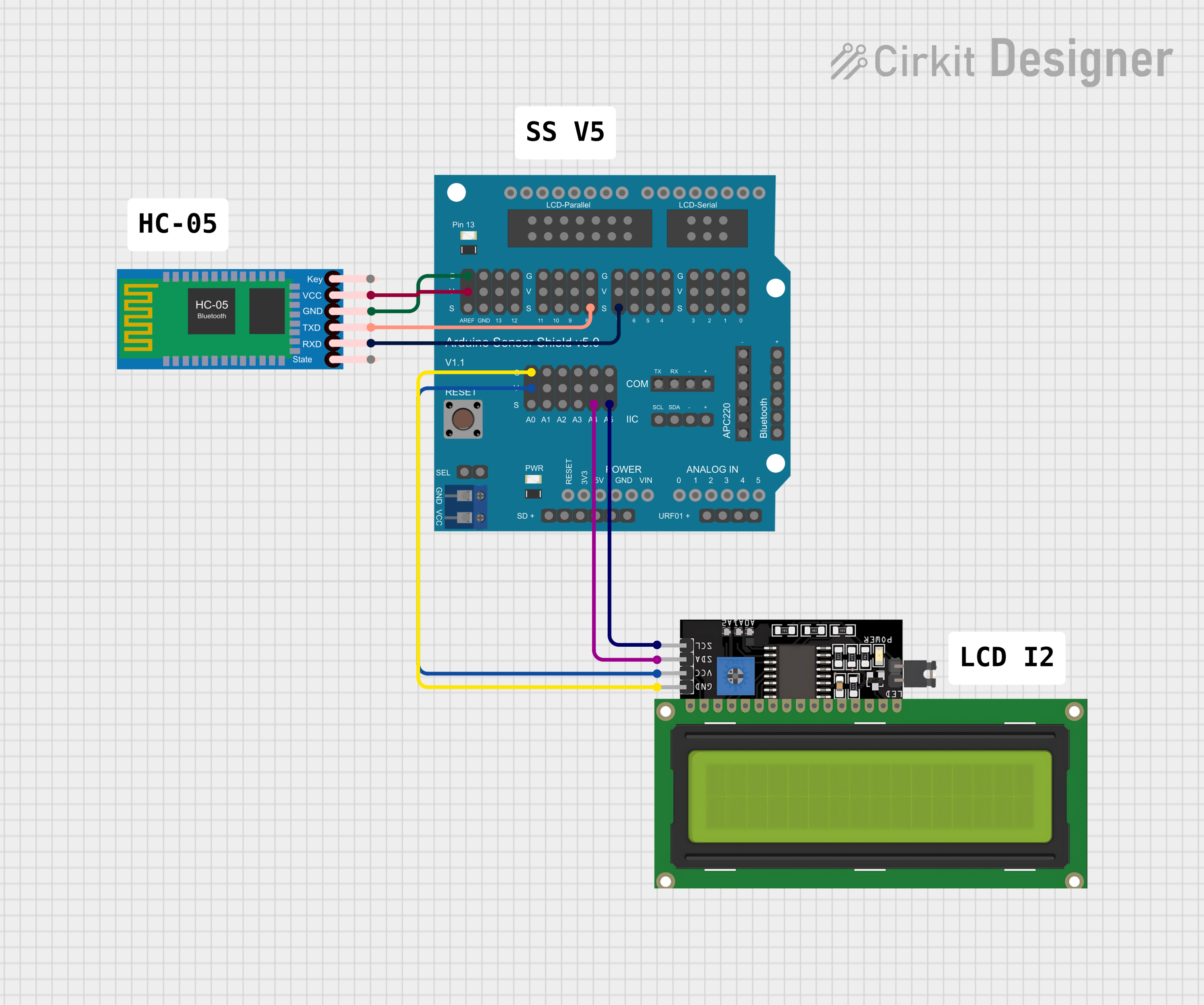
 Open Project in Cirkit Designer
Open Project in Cirkit Designer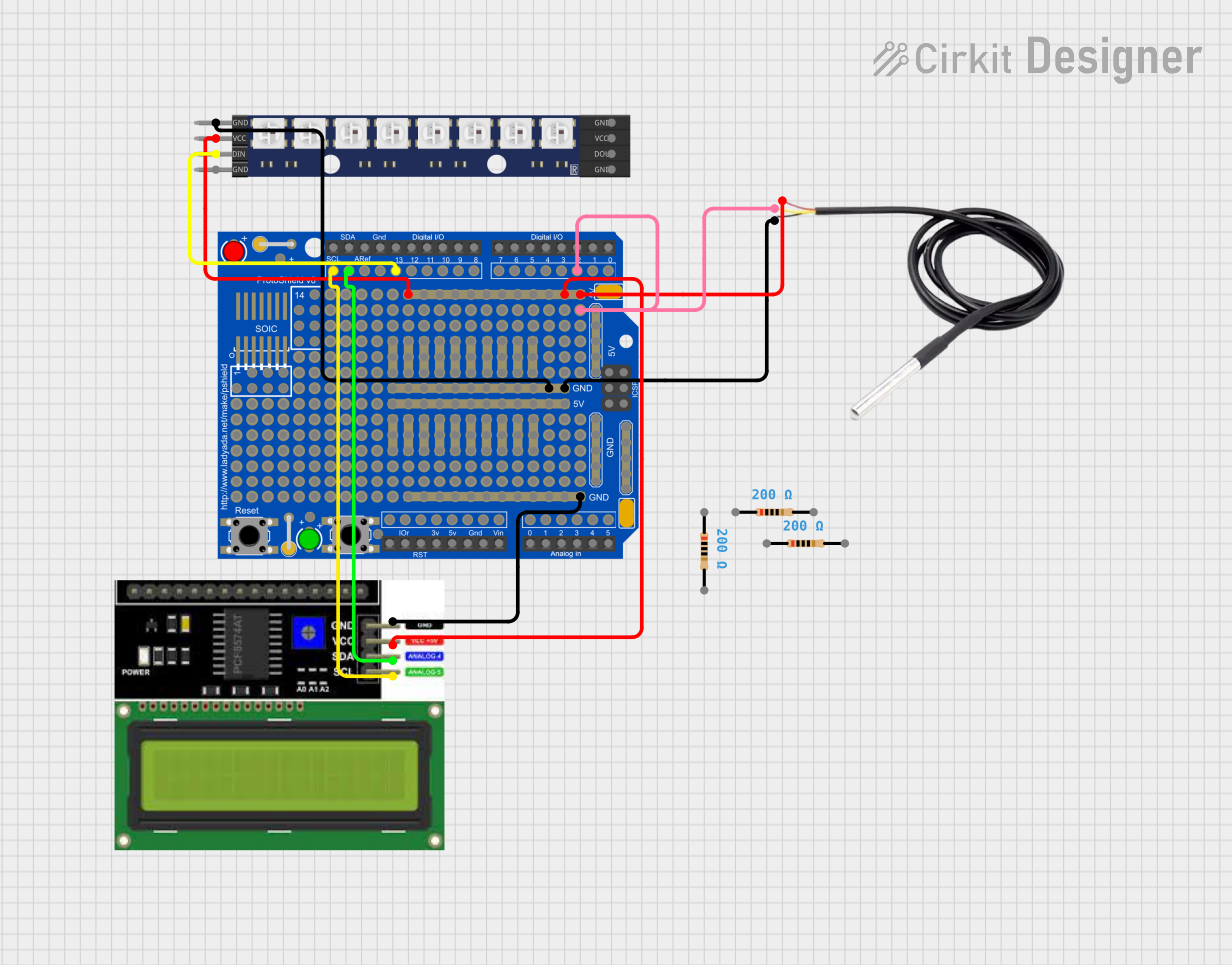
 Open Project in Cirkit Designer
Open Project in Cirkit Designer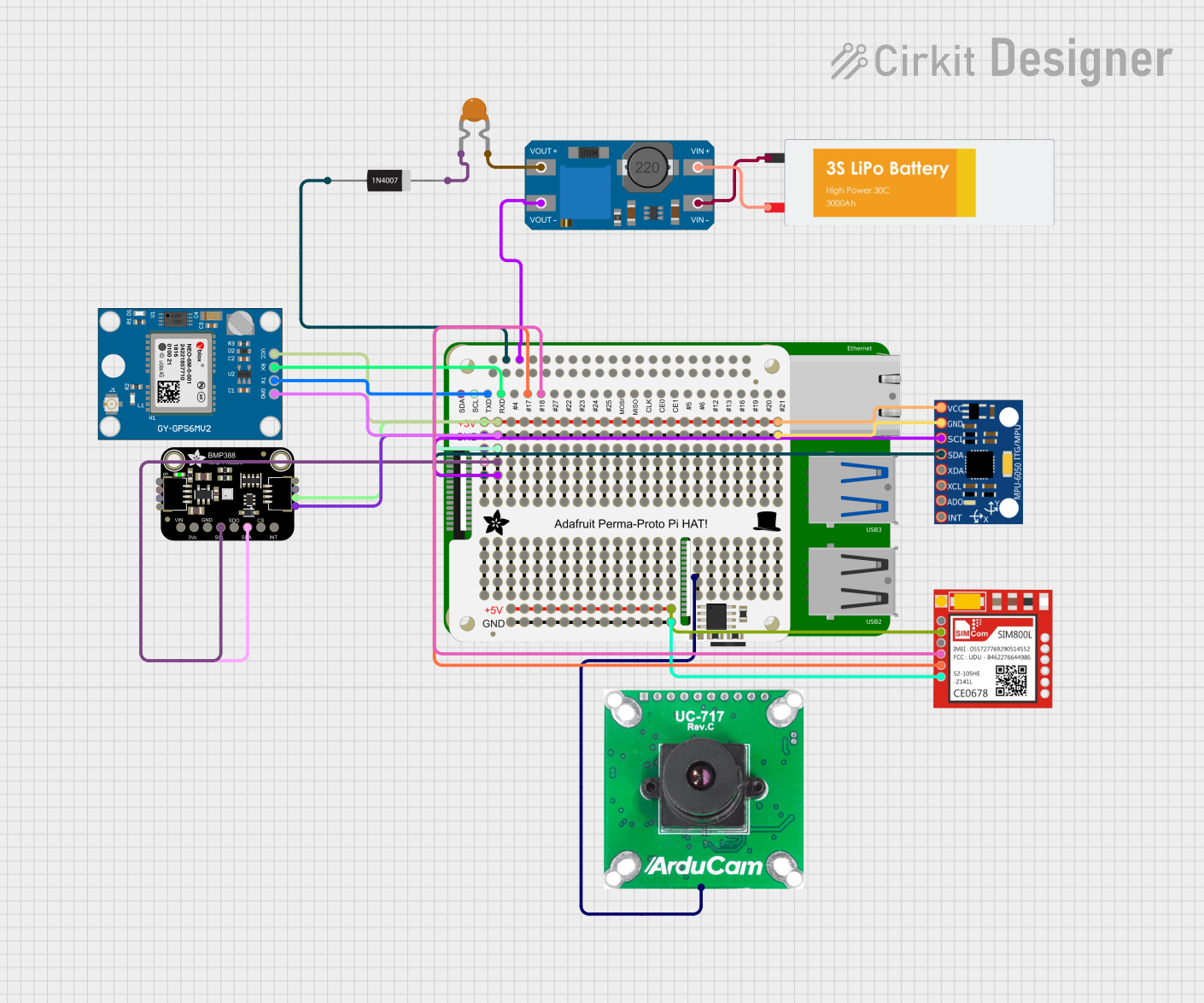
 Open Project in Cirkit Designer
Open Project in Cirkit Designer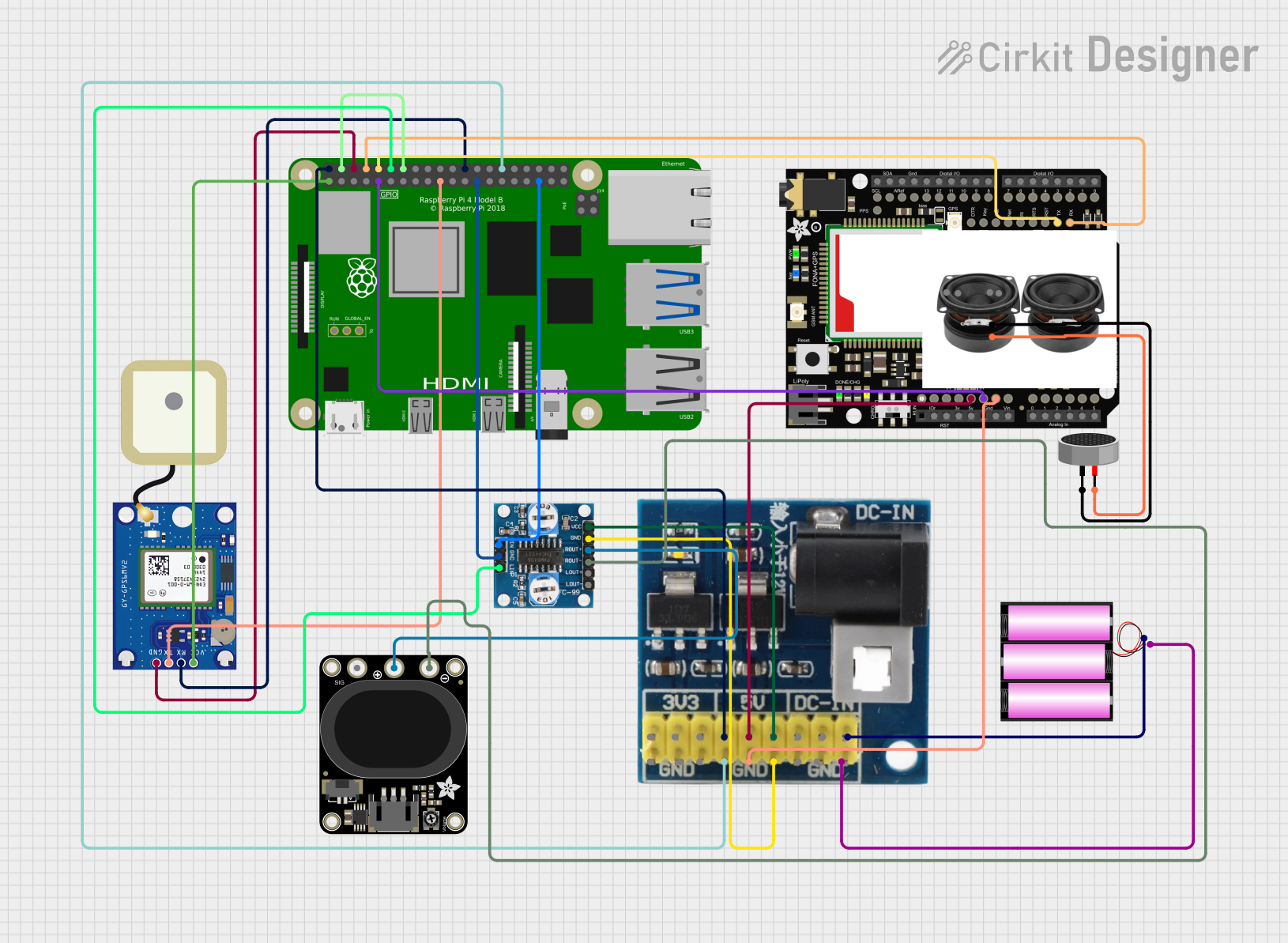
 Open Project in Cirkit Designer
Open Project in Cirkit DesignerExplore Projects Built with Adafruit Bluefruit LE Shield

 Open Project in Cirkit Designer
Open Project in Cirkit Designer
 Open Project in Cirkit Designer
Open Project in Cirkit Designer
 Open Project in Cirkit Designer
Open Project in Cirkit Designer
 Open Project in Cirkit Designer
Open Project in Cirkit DesignerTechnical Specifications
Key Technical Details
- Bluetooth Version: Bluetooth 4.0 Low Energy (BLE)
- Frequency: 2.4 GHz ISM band
- Range: Up to 10 meters (33 feet)
- Power Supply: 3.3V to 5V (from Arduino board)
- Logic Level: 3.3V (5V tolerant pins)
- Interfaces: UART/I2C/SPI
- Default UART Baud Rate: 9600 bps
Pin Configuration and Descriptions
| Pin Number | Function | Description |
|---|---|---|
| 0 (RX) | UART Receive | Used for UART communication with Arduino |
| 1 (TX) | UART Transmit | Used for UART communication with Arduino |
| 2 | Mode | Selects between DATA and COMMAND mode |
| 3 | Factory Reset | Resets the module to factory settings |
| 4 | Optional IRQ | Interrupt request, active low |
| 9 | Optional CTS | Clear to Send, active low |
| 10 | SPI Chip Select | Used when communicating via SPI |
| 11 | SPI MOSI | Master Out Slave In for SPI communication |
| 12 | SPI MISO | Master In Slave Out for SPI communication |
| 13 | SPI SCK | Serial Clock for SPI communication |
| A4 | I2C SDA | I2C Data line |
| A5 | I2C SCL | I2C Clock line |
Usage Instructions
Integrating with an Arduino Circuit
- Mounting the Shield: Place the Adafruit Bluefruit LE Shield on top of your Arduino board, ensuring that all the pins are aligned and inserted correctly.
- Power Supply: The shield will draw power directly from the Arduino board. No additional power supply is needed.
- UART Communication: Connect the RX and TX pins of the shield to the corresponding TX and RX pins on the Arduino for UART communication.
- SPI Communication: If using SPI, ensure that the SPI pins (10, 11, 12, 13) are connected correctly.
- I2C Communication: For I2C, connect A4 (SDA) and A5 (SCL) to the corresponding I2C pins on the Arduino.
Important Considerations and Best Practices
- Logic Levels: The shield's pins are 5V tolerant, but it operates at 3.3V logic. Be cautious when interfacing with components that use different logic levels.
- Baud Rate: The default UART baud rate is 9600 bps. If you change the baud rate, ensure that both the Arduino and the shield are configured to the same rate.
- Mode Selection: Use pin 2 to switch between DATA mode (for transparent UART communication) and COMMAND mode (to send AT commands to the module).
- Factory Reset: Use pin 3 to reset the module to factory settings if necessary. This can be useful if you encounter issues or need to clear previous configurations.
Example Arduino Code
Below is a simple example of how to use the Adafruit Bluefruit LE Shield with an Arduino UNO for UART communication:
#include <SoftwareSerial.h>
SoftwareSerial bluefruit(0, 1); // RX, TX
void setup() {
// Start the serial communication with the shield
bluefruit.begin(9600);
Serial.begin(9600);
Serial.println("Adafruit Bluefruit LE Shield ready");
}
void loop() {
// Check if data is available to read from the BLE shield
if (bluefruit.available()) {
char c = bluefruit.read();
Serial.print(c);
}
// Check if data is available to send to the BLE shield
if (Serial.available()) {
char c = Serial.read();
bluefruit.write(c);
}
}
Note: This example uses the SoftwareSerial library to create a serial connection on pins 0 and 1. Adjust the pin numbers as needed for your specific setup.
Troubleshooting and FAQs
Common Issues
- No Communication: Ensure that the shield is properly seated on the Arduino and that the correct pins are used for UART, SPI, or I2C communication.
- Unexpected Resets: If the shield resets unexpectedly, check the wiring of the factory reset pin to ensure it's not being triggered inadvertently.
- Inconsistent Data Transfer: Verify that the baud rate of the Arduino's serial port matches the shield's baud rate.
Solutions and Tips for Troubleshooting
- LED Indicators: Use the onboard LEDs to diagnose connection and activity status.
- AT Commands: Use AT commands in COMMAND mode to configure the shield and troubleshoot connection issues.
- Firmware Update: Ensure that the shield's firmware is up to date with the latest version from Adafruit.
FAQs
Q: Can I use the Adafruit Bluefruit LE Shield with other Arduino boards? A: Yes, the shield is compatible with most Arduino boards that support the required communication protocols (UART, SPI, I2C).
Q: How do I change the shield's baud rate? A: You can change the baud rate using AT commands in COMMAND mode. Refer to the Adafruit Bluefruit LE Shield documentation for specific commands.
Q: Can the shield be used for BLE central and peripheral roles? A: Yes, the shield can function in both central and peripheral roles, allowing it to initiate connections and accept incoming connections.
For more detailed information and advanced usage, refer to the official Adafruit Bluefruit LE Shield documentation and resources available on the Adafruit website.